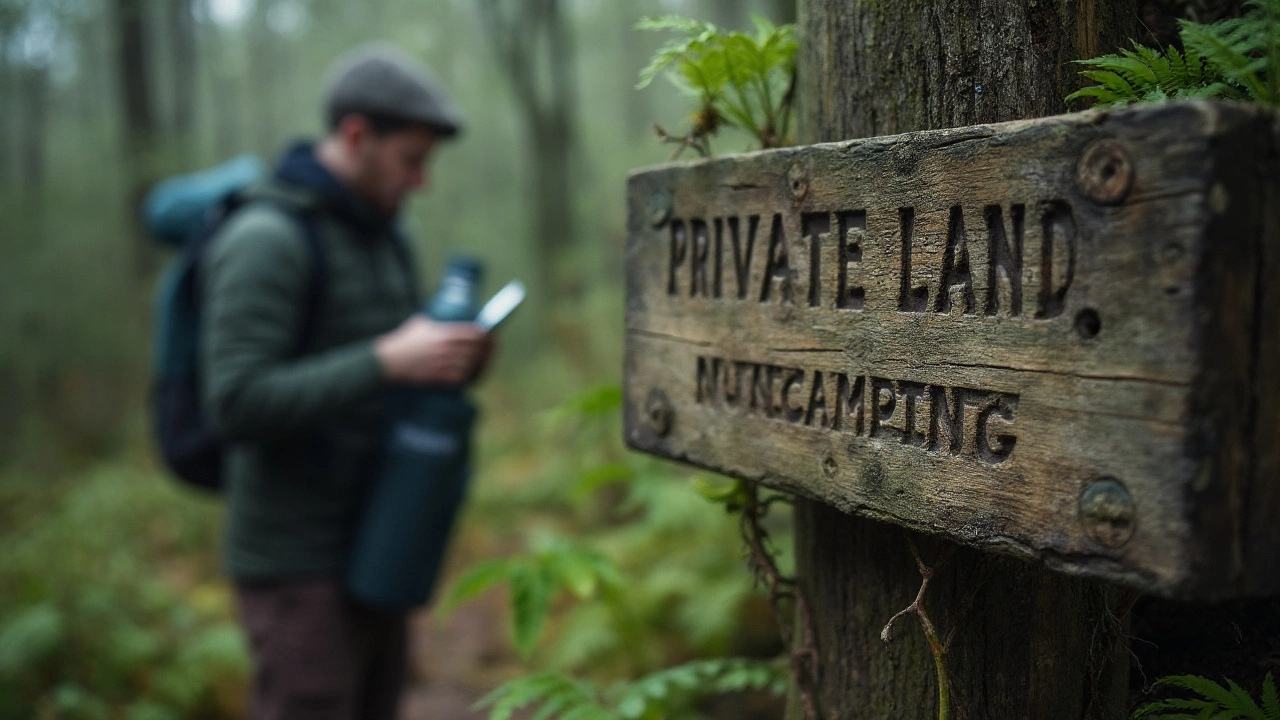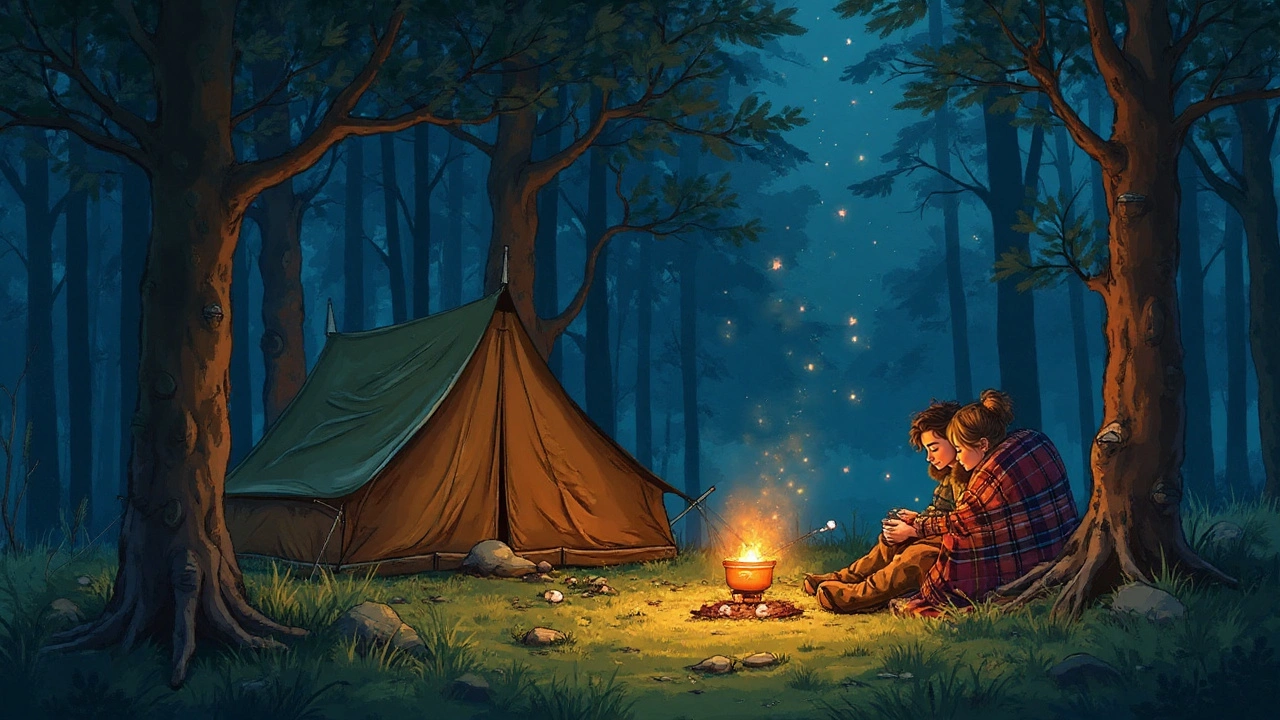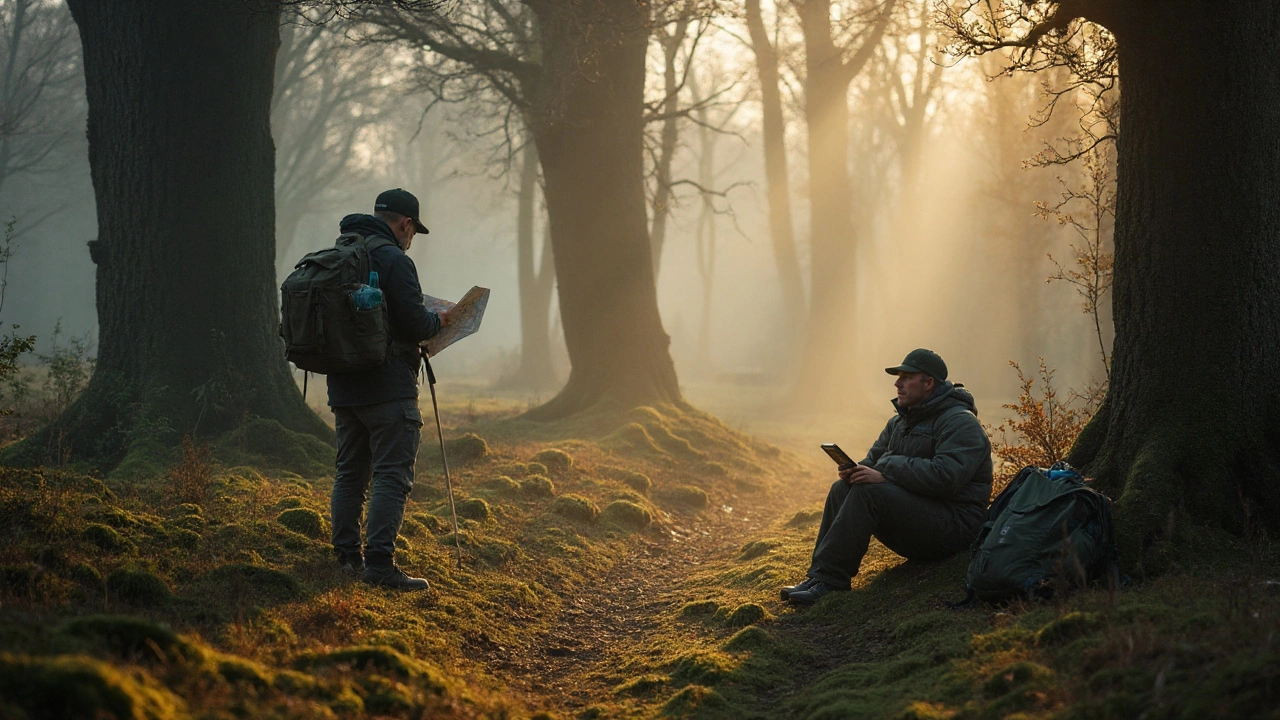If you’re picturing yourself waking up to birds in a misty British forest, hot mug of tea in hand, it sounds perfect-but there’s a lot to know before you sling a tent over your shoulder and wander into the trees. Getting it wrong means more than just a slap on the wrist; it could mean a fine or worse. But if you’re careful (and well-informed), the experience can be magical. Over the past year, the UK’s laws around wild camping-especially in the woods-sparked plenty of debates and even a few courtroom scraps. The answer to “can I camp in the woods UK?” isn’t just a yes or a no. Let’s break down what matters, what’s legal, and where you can loosen your bootlaces.
The Law: What You Can (and Really Can’t) Do
The number one surprise for many folks? Wild camping-setting up your tent anywhere that isn’t a registered site-is illegal pretty much everywhere in England, Wales, and Northern Ireland, unless you have explicit permission from the landowner. Scotland’s a different story, but we’ll get to that. Section 9 of the Theft Act 1968 and the Criminal Justice and Public Order Act 1994 make trespass a civil matter, but if you camp somewhere you’re not supposed to, you could be moved on by police or even fined for aggravated trespass. Don’t expect rangers to see you as just a friendly wanderer. In England’s woodlands, around 90% of the land is privately owned, including forests that feel wild and unclaimed. Even the Forestry England woodlands aren't an open invitation for pitching a tent.
Here’s a curveball: some managed forests (like a handful of Forestry England sites and a few private woodlands) do offer wild or semi-wild camping spots-often with strict booking and leave-no-trace rules. It’s rare, though, and you’ll need to do your homework well in advance. For most woods, you’ll see clear signs saying “No Camping,” but some woods look tempting and open. That doesn’t mean it’s allowed. Scotland, meanwhile, really is the outlier: its Land Reform (Scotland) Act 2003 allows wild camping on most unenclosed land, including much of the beautiful Caledonian pinewoods. Even there, you need to follow the Scottish Outdoor Access Code-keep numbers small, stay a night or two, and always leave things untouched.
Ever wondered why so many YouTube wild campers talk about being “stealthy”? It’s because lots of UK wild camping has become a practice of ‘not being seen’. Most wild campers aim to slip in late, pitch up away from paths, and disappear at sunrise. But getting caught can ruin your plans fast. You’ll hear stories of fines up to £1,000 in places like Dartmoor-though the law has swung back and forth thanks to recent high-profile legal challenges as of 2023.
So, short version: unless it’s Scotland or you’ve got written permission, the simple answer is “not legally-sorry.”
Wild Camping on Private and Public Land: What’s Really Allowed?
There’s a lot of confusion about what “public land” actually means. You might find a brilliant woodland with a public footpath running through it and assume it’s fair game. Spoiler: it’s not. The right to walk doesn’t extend to the right to sleep over. Public rights of way just let you pass through-not camp, cook, or light fires. Forests owned by Forestry England or National Trust woods often have their own local bylaws banning overnight stays, tents, or open flames. Fines are rare, but getting moved on is almost guaranteed if rangers spot your setup.
Looking for legal ways to get that woodland camping fix? Some UK woodland owners rent their land for “private wild camping”-you’ll find platforms like Nearly Wild Camping and Canopy & Stars offering little slices of wild woods legally and, best of all, safely. Some forestry companies now let organized groups (like schools or scouts) camp under special licenses, but individual wild campers usually don’t meet the criteria. And if you’re planning a microadventure, approach smaller woodland owners-many will say yes if you’re polite, clear about your plans, and promise to leave no trace. The more open you are about your love for nature, the more likely landowners might give you a thumbs up.
One exception sits up in Dartmoor, Devon, where after back-and-forth legal battles, the right to backpack camp was restored to parts of the National Park. Here, you can camp wild in designated areas-those without livestock or private dwellings. The best advice? Download the official Dartmoor camping map before you go, because boundaries change fast and what was legal a month ago may not be today.
The bottom line: most wild woodland camping is technically a no-go, but exceptions pop up if you ask around or search special platforms. Playing by the rules keeps your wild night out stress-free and lets future campers have the same shot. Always double-check the land status-you can check via Land Registry, the what3words app, or even the UK Government’s Magic Map.

Risks, Fines, and How to Avoid Trouble
The legal risks for wild camping in UK woods aren’t just a myth. Police or local enforcement officers do have the power to move you on, and while hefty fines aren’t dished out daily, the chance is real if you ignore rules in protected areas or build a fire. Open campfires are a particular red flag-even if you get away with camping, authorities clamp down on any sign of burning. Woodland fires can flare dangerously fast, especially during dry spells, and even one careless act can lead to a ban on future camping for everyone.
| Area | Wild Camping Allowed? | Notes |
|---|---|---|
| England | Rarely (with permission) | Mostly private woods, must ask landowner |
| Wales | No (except tiny exceptions) | Mainly private woods, special arrangements only |
| Scotland | Yes | Allowed under Outdoor Access Code |
| Northern Ireland | No | Private land, written permission needed |
| Dartmoor | Limited | In designated areas, follow map/rules |
Besides legal risks, there are genuine safety concerns. British woodland holds plenty of lush brambles and muddy slopes, but it’s also home to ticks (Lyme disease is no joke), prickly plants like giant hogweed (which gives blistering burns), and wildlife like badgers or foxes who can get curious about your snacks. Luna, my own dog, once had a territorial standoff with a particularly bold squirrel − nature’s not shy.
If you’re set on a night in the woods, avoid camping in areas with clear evidence of wildlife dens or burrows, and always check for “ash pits” where others may have lit dangerous fires before. Keep your kit light − rucksacks loaded with luxuries slow you down if you need to move on quickly. Never leave food outside your tent; you’ll wake up to half-chewed supplies if the foxes find you first.
For legal peace of mind, print out any permission you get from landowners. It gives you evidence if someone asks awkward questions at dawn. And if you’re exploring an area managed by organizations like Woodland Trust or National Trust, read their camping guidance in advance-some do run “wild camps” on special occasions.
Smart Tips for Woodland Camping in the UK
Legal bits aside, there’s an art to woodland camping that goes beyond picking a flat patch of ground. First off, stealth and respect are your best friends. Wear muted clothing, keep torches low, and skip the campfire. Go for a portable stove-Trangias and Jetboils are great-because flames catch unwanted attention and cause wildfires.
Pick your pitch with care. Aim for high ground to avoid damp or flooding at night, especially after classic UK rain. If the wind picks up, those towering ash or beech trees can drop hefty branches. Scan overhead for dead wood or “widowmakers” before you even think about putting up your tent.
Season makes a big difference, too. Spring and early autumn tend to be best-summer means midges and bugs, while winter camping demands pro gear and real experience. A little-known trick is to use an ultralight hammock or bivvy rather than a tent-you’ll be up off the bug-laden ground, leave less impact, and can move out quickly if needed.
Here’s a wild camping checklist for UK woods:
- Always get permission (unless you’re in legal Scottish woods)
- Packing in, packing out-leave no trace, even tiny things
- Arrive late, leave early to minimize your footprint
- No fires – ever
- Use a camping stove and keep noise down
- Hang your food or use critter-proof bags
- Keep group sizes tiny – 2-3 is less intrusive than 10
- Roll with the weather – UK woods can go from sunny to stormy fast
If you see dog walkers or rangers, a friendly hello and transparency help − hiding just looks suspicious. And no matter how remote, respect private spaces and fences. You might not see the landowner, but their trail cams often do.
One more tip from the dogwalker in me: double-check whether dogs are allowed, especially in woods with rare birds or livestock grazing nearby. My pal Luna’s boundless curiosity once got us shouted at by a gamekeeper-plenty of woods have ground-nesting birds you don’t want to disturb.

Where to Go: Finding Legal Woodland Campsites and Hidden Spots
Craving legal thrills? There are special places in the UK where the wild woodland feeling is protected-and allowed. Forestry England lists a handful of “wild camping” sites, though these aren’t totally remote: think limited numbers, basic facilities, often for paddlers or mountain bikers on multi-day trips. A few private woods on platforms like Nearly Wild Camping offer forest floor pitches you book in advance-some come with simple compost loos and not much else, so it still feels rugged and wild.
If you’re set on Scotland, you’ll find the most freedom. The Cairngorms National Park, Loch Lomond (outside the strictest camping zones), and the Great Trossachs are all magnets for legal wild campers. Just remember zone rules-Loch Lomond requires a “camping permit” in busy summer stretches, costing a fiver a night, and using designated bays. Wildwood Project sites in Wales allow semi-off-grid camping-just you and the owls-if you’re up for foraging your own firewood (using a camp stove, of course).
For families or new campers, book into forest campsites attached to big woods-Sherwood Forest, New Forest, or Forest of Dean have legit woodland campsites with a “wild” vibe, minus the risk of a late-night authority visit. It’s not true wild camping, but you do get toasted marshmallows and stories around an official campfire.
Looking to go totally off-grid while flying under the radar? There are legendary “secret” spots swapped between wild campers-but sharing locations publicly often leads to crowding or local bans, so you’re better off learning to read OS Maps, spotting public access woodland, and seeking out unfrequented patches. If you find a gem, keep it tidy and don’t spoil the magic.
Wild woodland camping isn’t for everyone-it demands research, self-reliance, and a proper respect for what the law (and landowners) allow. But when you get it right, that first morning with dew on the tarp and birds in the branches? Worth every careful effort. If you’re cautious, keen, and care for the woods as if they were your own, there’s a world of adventure waiting-in plain sight or just behind the brambles.
